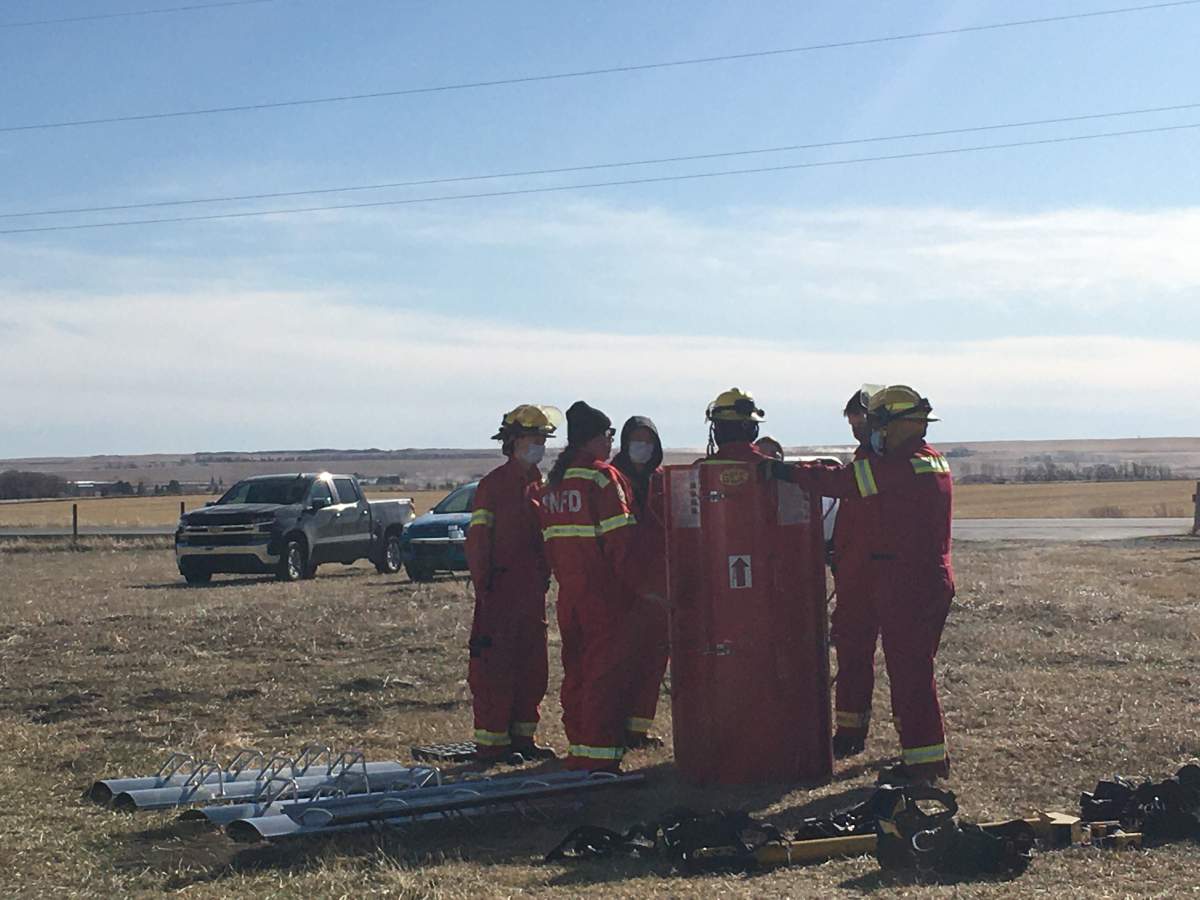Falling in a grain bin can be extremely dangerous — even deadly.

It can take as little as three seconds for a person to be completely buried by fast-flowing grain — a preventable cause of death on Canadian farms.
As the grain rises around a person, it puts pressure on and compresses against the body. Once the grain reaches chest level, it becomes harder for the chest to expand, making breathing difficult.
In an effort to prevent tragedies like grain asphyxiation, the Magrath Fire Department hosted a grain bin rescue course over the weekend, with the help of Canadian Agricultural Safety Association (CASA) and Alberta Wheat.
“There’s nobody else in southern Alberta that has this sort of training,” said Sean Stanford, a farmer and captain of Magrath Fire Services.
“It was a great opportunity for us to take advantage of some funding that came our way from the Alberta Wheat Commission.”
Cardston Fire and the Blood Tribe also went out to take part in the training.
Siksika First Nations fire marshall Tom Littlechild taught the course and knows first-hand how dangerous falling into a grain bin can be.
Growing up on a farm, he found his father stuck in a grain bin.

Get weekly health news
“He was up to his chest. Back then, we didn’t have any of this equipment, but we did get him out. We got very lucky.”
It was important for the people taking the course to experience this, said Littlechild.
Cliff Blackwell, fire chief with Magrath Emergency Services, was one of the volunteers who went into the bin.
“I found that once I was mid-thigh, I was done,” he said.
“I couldn’t move. I couldn’t get out myself.”
“It’s interesting to see somebody struggle so much, buried up to their chest in grain, and that they couldn’t move or get out themselves,” said Stanford. “I’ve seen videos of it before but to actually see it in person is a little different.”
The firefighters who attended the training learned how to rescue someone who is stuck in the grain.
First, they place matts down on the grain so they can safely stand on it. Next, cofferdams are placed around the person to relieve some of the pressure.
Using a pencil auger, the grain is “vacuumed” out of the cofferdam enclosure until the person can move. If they aren’t conscious, a harness will be placed around them so emergency services can safely lift the person out.
“It does happen more often than we know. Usually the person can extract themselves, but not always,” Blackwell said.

In 2015, three sisters died after playing on a truck loaded with canola at a rural property 15 kilometers east of Rocky Mountain House.
Twin sisters Dara, and Jana, 11, and older sister Catie, 13, were buried in the seed.
Family and friends pulled the girls out of the grain and performed CPR until emergency crews arrived, but two of the girls died at the scene. Dara died the next day in hospital.
Working on a farm can be dangerous, so Blackwell is happy to have his crew trained on grain bin rescues.
“It will benefit our crew because we gain more experience, and we have the ability to assist in the rural community that we live in here.”
The advice for people working with grain bins is simple — don’t do it alone.
“Let somebody know what you’re doing, that’s the biggest thing I guess as well,” Littlechild said.
But in case an accident does strike, Blackwell is confident his team will be ready.
“Being chief in a rural community, I have to look at just about every kind of accident that can happen in my community.
“I try to prepare for the worst and hope for the best.”











Comments